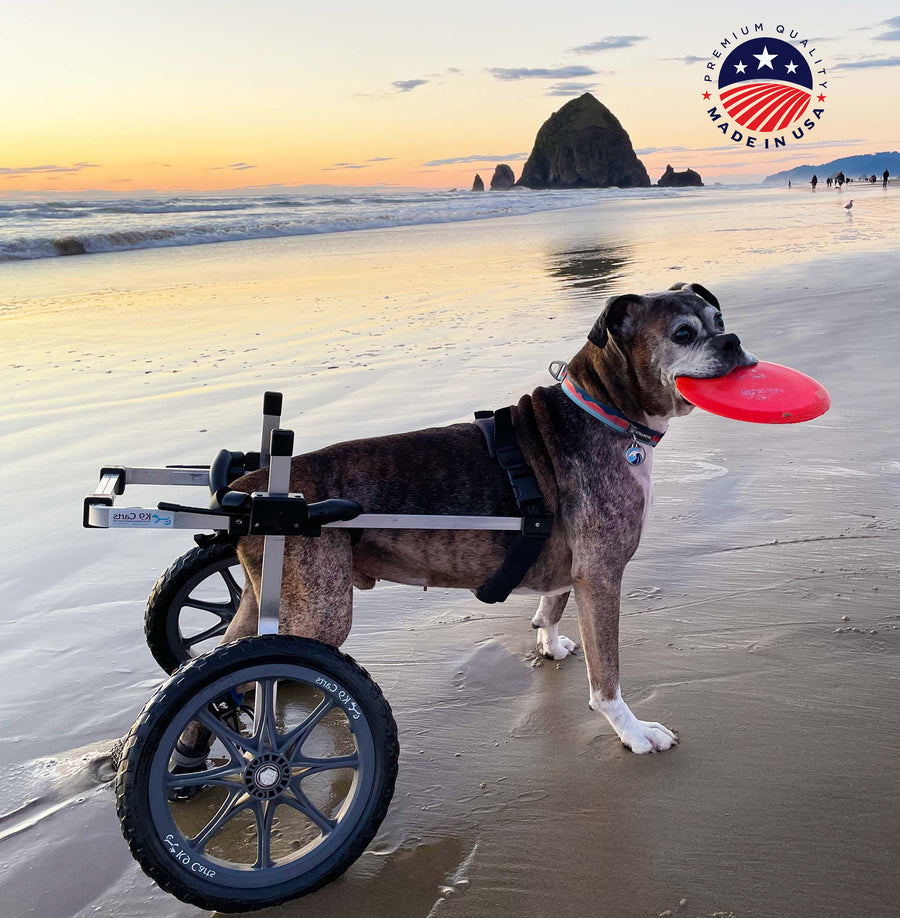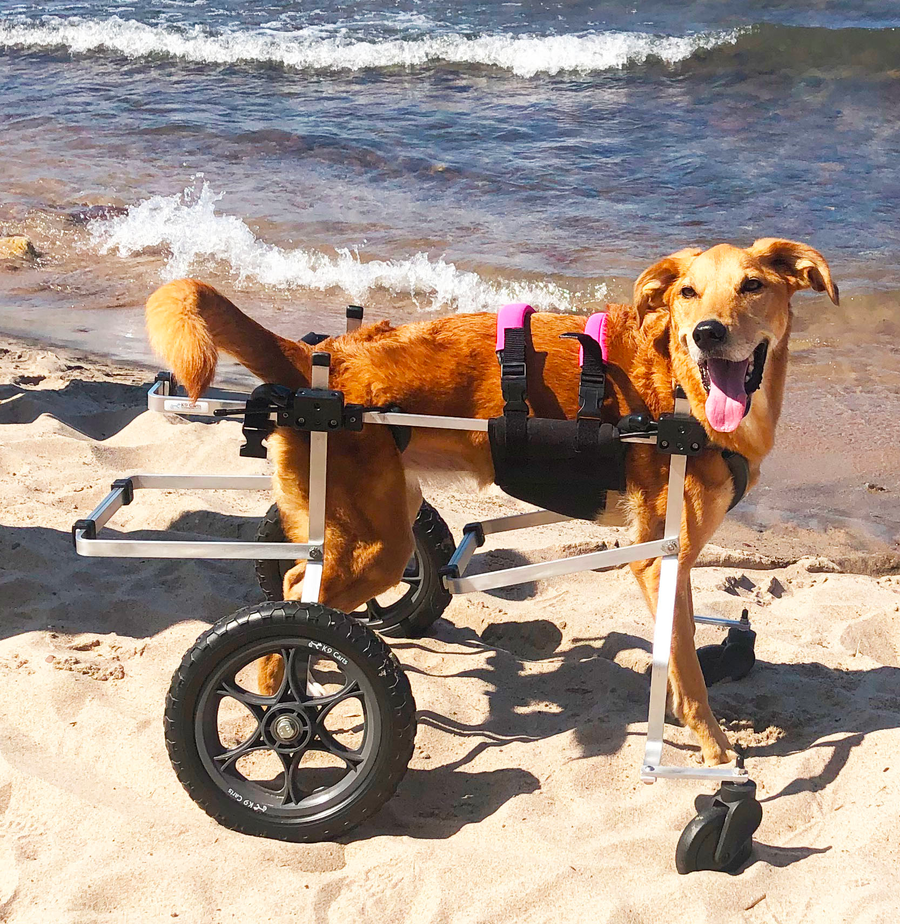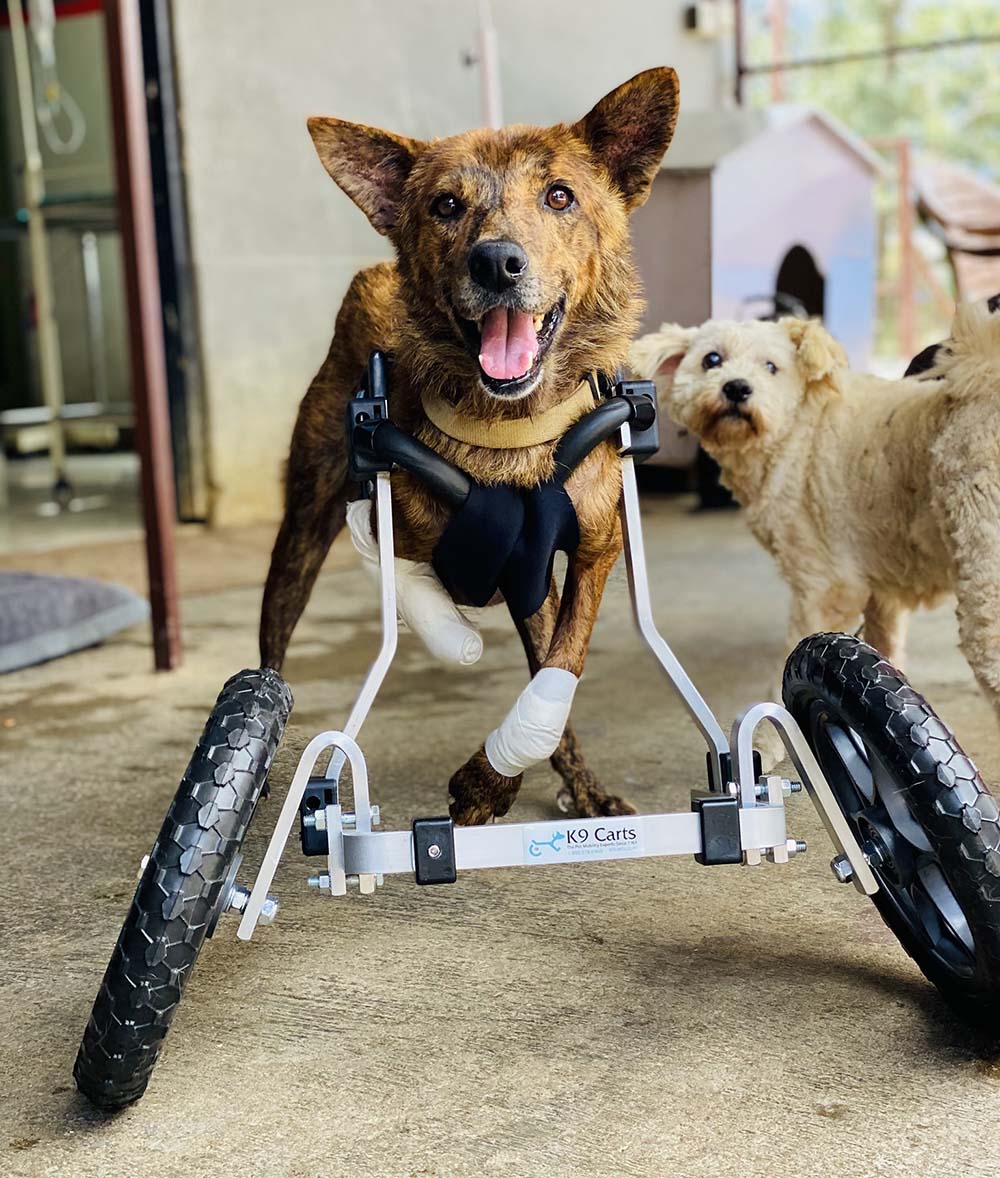German Shepherd Hip Dysplasia: Causes, Symptoms, and Treatments

Hip dysplasia is a common health issue faced by many German Shepherds, causing discomfort and reducing their quality of life. This article aims to provide an in-depth understanding of the causes, symptoms, and treatment options for this condition in German Shepherds. By taking preventive measures and seeking early intervention, you can help ensure the long-term health and happiness of your beloved pet.
What is Hip Dysplasia?
Hip dysplasia is a debilitating condition that affects the hip joint’s proper formation and function in dogs, particularly in large breeds like German Shepherds. This condition occurs when the ball (femoral head) and socket (acetabulum) of the hip joint do not fit together correctly, leading to instability and eventually arthritis.
Definition and Overview
Hip dysplasia is a genetic condition that can be passed down from one generation to the next. It is the result of a malformation in the hip joint, where the head of the femur (thigh bone) does not fit snugly into the acetabulum (hip socket). This loose fit causes the joint to wear down over time, leading to chronic pain, inflammation, and a reduced range of motion. Severe cases of hip dysplasia can render a dog unable to walk without assistance.
It is essential to note that hip dysplasia can affect dogs of all ages, not just older dogs. Puppies as young as five months old can show signs of hip dysplasia, making it crucial to monitor your dog’s hip health from a young age.
There are several factors that can contribute to the development of hip dysplasia, including genetics, nutrition, and exercise. Ensuring that your German Shepherd maintains a healthy weight and receives proper exercise can help reduce the risk of developing hip dysplasia.
Is Hip Dysplasia Common in German Shepherds?
German Shepherds are among the breeds most frequently affected by hip dysplasia. According to the Orthopedic Foundation for Animals (OFA), approximately 20% of German Shepherds experience some degree of hip dysplasia. This high prevalence makes it crucial for German Shepherd owners to be vigilant regarding their dogs’ hip health and to seek prompt veterinary advice if they suspect any issues.
It is important to note that while hip dysplasia is more common in larger breeds like German Shepherds, it can affect dogs of all sizes. Other breeds that are prone to hip dysplasia include Labrador Retrievers, Golden Retrievers, and Rottweilers.
If you suspect that your dog may be suffering from hip dysplasia, it is essential to seek veterinary advice as soon as possible. Early detection and treatment can help manage the condition and improve your dog’s quality of life.
Causes of Hip Dysplasia in German Shepherds
Multiple factors can contribute to the development of hip dysplasia in German Shepherds. By understanding these factors, breeders and owners can work to reduce the risk of this debilitating condition.
Genetic Factors
Genetics is the most significant contributing factor to hip dysplasia in German Shepherds. The condition is not caused by a single gene mutation but rather a combination of multiple genes. Breeding practices can exacerbate the prevalence of hip dysplasia. Selective breeding of dogs with healthy hips can assist in reducing the occurrence of hip dysplasia within the breed.
Environmental Factors
Environmental factors, such as exercise and living conditions, can impact the development of hip dysplasia in German Shepherds. For instance, excessive exercise during the critical growth period can cause early joint degeneration, while lack of exercise can result in weak muscles that do not provide adequate support for the hip joint.
Nutritional Factors
Diet plays a crucial role in the overall health of your German Shepherd, including their hips. Overfeeding can lead to rapid growth and obesity, both of which can contribute to hip dysplasia. A well-balanced diet, with the right balance of nutrients and calories, is essential for supporting healthy joint development and maintaining a healthy weight.
Growth and Development
During growth and development, the hip joint undergoes significant changes that can influence the development of hip dysplasia. The rapid growth that German Shepherds experience during their first year of life can put additional stress on their hip joints. Monitoring their growth and activity levels can help reduce the risk of hip dysplasia.
Recognizing the Symptoms of Hip Dysplasia
Early detection of hip dysplasia is critical for successful treatment, so it is essential to recognize the signs and symptoms. Symptoms can vary based on the severity of the condition and the age of the dog.
Early Signs in Puppies
Some puppies may start showing signs of hip dysplasia as early as four months of age. Early signs in puppies can include:
- Bunny hopping when running
- Difficulty rising from a sitting or lying position
- Stiffness or limping after activity
- Reluctance to climb stairs, jump or engage in vigorous play activities
Symptoms in Adult German Shepherds
In adult German Shepherds, the symptoms of hip dysplasia can become more apparent as the dog ages and joint degeneration progresses. These symptoms may include:
- Decreased activity levels or reluctance to exercise
- Ongoing stiffness or limping, especially limping after laying down or sleeping, or after exercise
- Swaying or unsteady gait
- Obvious hip pain when touched or during movement
- Limited range of motion in the hip joint
Long-term Effects and Complications
If left untreated, hip dysplasia can lead to debilitating arthritis, significantly impacting a German Shepherd’s quality of life. As the joint degenerates further, chronic pain, immobility, and eventual loss of function can occur. Recognizing and treating hip dysplasia early can help slow down its progression and maintain your dog’s activity level and comfort.
Diagnosing Hip Dysplasia in German Shepherds
Diagnosing hip dysplasia in German Shepherds involves a thorough examination by a veterinarian. Several diagnostic tools can aid in determining the severity of the condition.
Physical Examination
A thorough physical examination is the first step in diagnosing hip dysplasia. A veterinarian will assess your dog’s overall condition, focusing on the hips and surrounding muscles. They may manipulate the hips to evaluate any discomfort, decreased range of motion, or joint laxity.
X-rays and Imaging
X-rays and other imaging techniques, such as CT scans or MRIs, can provide detailed images of your dog’s hips, giving the veterinarian insight into the joint’s structure, advanced arthritis signs, and potential complications. These imaging tests can help confirm a hip dysplasia diagnosis and guide treatment options.
Veterinarian Expertise
When diagnosing hip dysplasia, the expertise of your veterinarian is crucial. They will use their knowledge and experience to interpret the examination findings, imaging tests, and your dog’s history to arrive at a diagnosis and develop a comprehensive treatment plan.
Treatment Options for Hip Dysplasia
Treatment options for German Shepherds with hip dysplasia vary depending on the severity of the condition and the individual dog’s needs. In many cases, a combination of non-surgical and surgical treatments may be necessary to manage the condition effectively.
Non-Surgical Treatments
Non-surgical treatments aim to manage pain, improve mobility, and maintain joint function in dogs with hip dysplasia. These treatments include:
1. Weight Management
Maintaining a healthy weight is critical for dogs with hip dysplasia as excessive body weight can aggravate joint degeneration and cause increased pain. A controlled diet and regular exercise can help keep your German Shepherd at their ideal weight.
2. Physical Therapy
Physical therapy exercises can help maintain or improve joint function, muscular strength, and overall flexibility. A veterinarian or a certified canine rehabilitation practitioner can recommend specific exercises tailored to your dog’s needs, such as swimming or ultrasound therapy.
3. Medications and Supplements
Anti-inflammatory medications, such as NSAIDs, can help manage pain and inflammation in dogs with hip dysplasia. Nutritional supplements, like glucosamine and chondroitin, may also provide joint support and improve cartilage production. Always consult with your veterinarian before giving your dog any medications or supplements.
Surgical Treatments
When non-surgical treatments are not enough to manage your dog’s condition, surgical intervention may be necessary. Common surgical treatments for hip dysplasia include:
1. Hip Replacement
Total hip replacement involves replacing the damaged hip joint with a synthetic implant. This surgery can provide a permanent solution to hip dysplasia, significantly improving mobility, and reducing pain.
2. Femoral Head Ostectomy (FHO)
An FHO involves removing the femoral head, which can reduce pain and allow the joint to form a false joint. This procedure may be most effective in smaller dogs, but it may also be beneficial for larger dogs that cannot undergo a total hip replacement.
3. Triple Pelvic Osteotomy (TPO)
TPO is a procedure that involves cutting and repositioning the pelvic bone to improve hip joint alignment. This surgery is most effective in younger dogs whose hip sockets are still forming and have not yet developed severe arthritis.
Dog Wheelchairs: Mobility Assistance for Hip Dysplasia
For German Shepherds with severe symptoms, mobility assistance in the form of a wheelchair can provide support and help them maintain their independence.
A wheelchair specifically designed for dogs can help redistribute weight from the hind limbs to the front limbs, providing much-needed relief for German Shepherds suffering from hip dysplasia. This alleviates pressure on their hips and makes it easier for them to move around. By supporting their body, the wheelchair allows them to regain balance, coordination, and overall mobility, making it possible for them to walk, run, and enjoy life with greater ease.
Wheelchairs Enhance Quality of Life
Hip dysplasia can impact a German Shepherd’s overall well-being, causing discomfort and potentially leading to depression due to their decreased ability to engage in activities they once enjoyed. By using a wheelchair, they can continue to participate in many of their favorite activities, boosting their mood and overall quality of life.
They Help Prevent Further Damage to Limbs
In addition to improving mobility and quality of life, wheelchairs also help protect a dog’s limbs from further damage. When a German Shepherd with hip dysplasia tries to move without assistance, they may overcompensate by putting extra stress on their front limbs and remaining hind limb, potentially leading to injury or additional joint problems. A wheelchair helps to evenly distribute their body weight, reducing the likelihood of further complications and promoting healthier limb function.
At K9 Carts, we specialize in providing these essential mobility aids to help pets regain their independence and continue enjoying life to the fullest. Discover our full range of wheelchairs for dogs:
In conclusion, early detection and prompt intervention are key to managing and treating hip dysplasia in German Shepherds. By understanding the causes, recognizing the symptoms, and seeking appropriate treatment, you can help ensure a long, healthy, and active life for your beloved pet.









